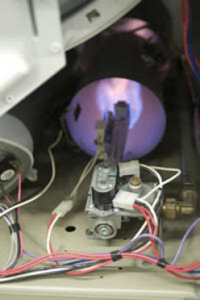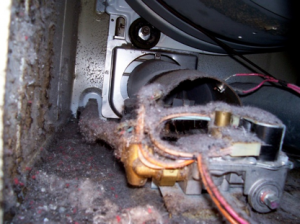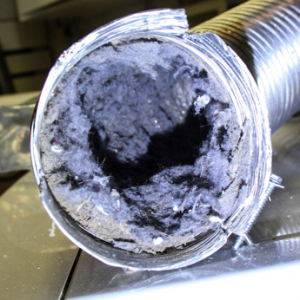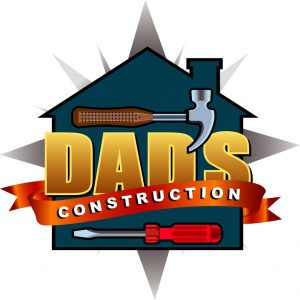Fire Hazards in Your Home
It’s every person’s worst nightmare to be awoken in the middle of the night by the smell of smoke. And unfortunately, this scenario is all too common. According to the National Fire Protection Association (NFPA), there were approximately 355,400 home fires between 2012 and 2016 alone, which caused $6.5 billion in property damage, 11,670 injuries, and 2,560 deaths. While regularly testing your smoke detectors, having fire extinguishers handy, and not smoking can all reduce your risk of a structure fire, there are many surprising factors that can contribute to a fire in your home that you probably don’t know about. Read on to discover what top fire safety professionals want you to know about Home Fire Facts to stay safe and reduce fire hazards in your home..
You live in a newer home – You have Fire Hazards in Your Home.
 As counterintuitive as it might sound, living in a new building actually increases your home’s fire risk factor. Plus, if you live in a more modern home and it does catch fire, it’s also more likely to spread faster.
As counterintuitive as it might sound, living in a new building actually increases your home’s fire risk factor. Plus, if you live in a more modern home and it does catch fire, it’s also more likely to spread faster.
“A newer home is going to burn four times faster than older building construction and older homes would,” says Tom Hart, a firefighter in the Yonkers Fire Department in New York and a safety engineer at international engineering firm Syska Hennessy. That’s because of flammable plastics and newer wood that builders use today. “The coating and finish on modern wood burns much quicker and is much more likely to burn through,” Hart says.
You have leaks in your plumbing.
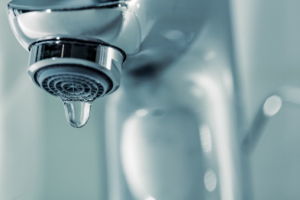 Water can be one of the fire hazards in your home you would never consider. Though water is generally thought of as fire’s mortal enemy, the liquid can also be the cause of a house fire if you’re not careful. “If you have water leaking in through the structure and it happens to come into contact with electrical wires, electrical boxes, or electrical outlets, you could have a short,” says Chuck Roydhouse, a retired professional firefighter and president of the Chimney Safety Institute of America (CSIA). At the first sign of water damage, it pays to call a plumber as well as an electrician, or that short could cause a fire inside your wall.
Water can be one of the fire hazards in your home you would never consider. Though water is generally thought of as fire’s mortal enemy, the liquid can also be the cause of a house fire if you’re not careful. “If you have water leaking in through the structure and it happens to come into contact with electrical wires, electrical boxes, or electrical outlets, you could have a short,” says Chuck Roydhouse, a retired professional firefighter and president of the Chimney Safety Institute of America (CSIA). At the first sign of water damage, it pays to call a plumber as well as an electrician, or that short could cause a fire inside your wall.
Your paint is peeling.
Though most people associate peeling paint with lead contamination or moisture issues, it can also be a sign of a potential fire hazard in your home. If you notice paint peeling:
 Around the pipe venting a furnace, boiler, or wood stove
Around the pipe venting a furnace, boiler, or wood stove- On the area above or around your fireplace opening
There may be an electrical element that’s overheating behind the wall, according to Roydhouse. He notes that cracking wall paneling, or discolored sheetrock can also be signs of the same issue.
I’ve personally seen in many instances’ drywall nails installed through wiring when I perform demolition. There is a significant amount of charcoal (burned areas due to heat and/or fire) around the wiring, wood, and drywall. How is this possible? When the drywall was installed, nail plates were not used to cover the wiring. Nail plates are not required by building code in many instances. I think this is wrong. DAD’s always uses nail plates over wiring. Nail plates are really cheap fire insurance. They only cost around $0.43–$1.00 depending on the size.
You live in a cluttered space – Your chances of fire hazards in your home is greatly magnified.
Nobody can be expected to keep their house neat and organized 24/7, but if you have lots of clutter in your home consistently, you’re inadvertently putting yourself in harm’s way.
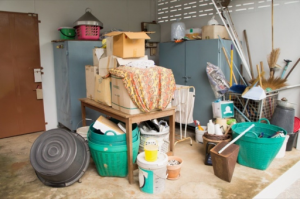 According to Hart, storage rooms, garages, laundry rooms, attics, and basements stacked with boxes near electrical panels are often a source of fast-moving and difficult-to-contain fires.
According to Hart, storage rooms, garages, laundry rooms, attics, and basements stacked with boxes near electrical panels are often a source of fast-moving and difficult-to-contain fires.
Cluttered kitchens pose serious fire hazards in your home. Stacking food boxes, dish and paper towels, mail, papers, cookbooks, plastic cookware and utensils, etc. around or on a cooktop, stove, toaster, coffee maker, or microwave is risky business. These items can start a fire the moment you turn your back.
TIP: Clean your toaster. Under your toaster are trays that slide out. The purpose of these trays is to catch crumbs. If the number of crumbs build up, they can easily catch fire . . . and so can all the papers stacked around it!
TIP: Don’t stuff brooms, mops, bags, etc. around your refrigerator. Refrigerators have compressors that need air circulation to stay cool and operate properly. If you stuff the sides and pile items on the top, you destroy the air movement. This can cause the compressor to overheat and catch fire. By the way, you should clean behind, around, and under your refrigerator at least twice yearly. This includes cleaning the compressor area and the coils to remove all the dust, hair, and other debris. Failing to do this can cause the compressor to overheat and catch fire – it also significantly shortens the life of the refrigerator.
You have a mouse or rat problem.
 Finding that someone other than you is snacking on the food in your pantry isn’t the only downside about having mice. As Hart notes, wires that have been chewed through by rodents are “a common source of electrical fires.” The good news? Not only are signs of a mouse infestation pretty obvious, but electrical fires have a characteristic burning smell that’s easy to spot before there are any actual flames. So, if you smell something burning and can’t locate its source, it’s best to call 911 before things get out of hand. Damaged electrical wires can smolder in your walls for years before igniting into a fire.
Finding that someone other than you is snacking on the food in your pantry isn’t the only downside about having mice. As Hart notes, wires that have been chewed through by rodents are “a common source of electrical fires.” The good news? Not only are signs of a mouse infestation pretty obvious, but electrical fires have a characteristic burning smell that’s easy to spot before there are any actual flames. So, if you smell something burning and can’t locate its source, it’s best to call 911 before things get out of hand. Damaged electrical wires can smolder in your walls for years before igniting into a fire.
I can tell you first-hand that Orange County has a rat problem. I have never worked in any house in Orange County where I did not find either live and/or dead rats in the walls, attic, and floor spaces. A rat can fit through a hole the size of a quarter, about 0.96 inches, and mice can squeeze through a hole that is ¼ inch in width. Get out a tape measure and look at how small these sizes are. New home builders do not pay close attention to openings this small. Openings like this are all over your house and hard to spot – and some of these areas you would never think of! Whenever I perform work for a client, I seal any openings in the area I’m working. If I notice others (such as when I’m in an attic), I alert the client and I fix them if requested.
You don’t dust your electronics regularly.
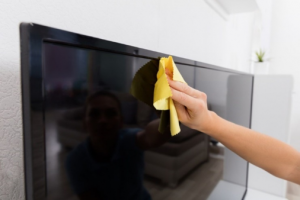 Dusting may be a thankless job but failing to keep those electronics clean can present a bigger risk to your safety than you might imagine. “Dust is flammable,” says Hart. And it makes appliances more likely to overheat. Once an appliance sparks, that dust can ignite, leading to a fast-spreading fire that’s hard to put out.
Dusting may be a thankless job but failing to keep those electronics clean can present a bigger risk to your safety than you might imagine. “Dust is flammable,” says Hart. And it makes appliances more likely to overheat. Once an appliance sparks, that dust can ignite, leading to a fast-spreading fire that’s hard to put out.
Those power strips, surge protectors, and extension cords behind furniture are other sources. Take a moment and go look under your bed or behind a piece of furniture. If you’re like most folks, you’ll see that the power strip, if not completely covered in dust, has a thick layer!
Receptacles (electrical outlets) behind beds and furniture can easily become completely saturated by dust in a few years. Although it’s not the most enjoyable way to spend a few hours, you should thoroughly clean under and behind your furniture and beds at least once each year.
You stack laundry on your dryer . . . This is a serious fire hazard in your home.
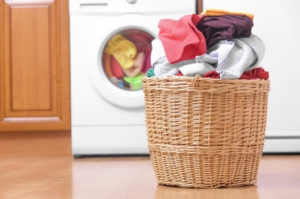 Think leaving piles of folded laundry atop your dryer before you put them away is no big deal? Think again. Hart cites dryers piled with laundry as one of the surprisingly common source of home fires. And unfortunately, that’s not the only fire risk associated with your dryer.
Think leaving piles of folded laundry atop your dryer before you put them away is no big deal? Think again. Hart cites dryers piled with laundry as one of the surprisingly common source of home fires. And unfortunately, that’s not the only fire risk associated with your dryer.
The dryer duct must be cleaned or replaced at least once each year.
Even if you think you’re adept at cleaning this appliance, you might still want to give it another pass. That occasional wipe-down of your lint trap just won’t cut it. Gas dryers need to be cleaned inside and out, around, and behind. The dryer duct itself is one of the most serious but overlooked fire hazards in your home. It must be cleaned at least yearly – more often if you do lots of laundry or the dryer is in the garage. Why? These fill with lent, especially where it connects to the dryer (where the heat source is located). This catches on fire easily. Under the dryer (but inside), must be cleaned at least once a year. Pull the bottom panel off from the front of your dryer and you’ll see there is dust all around the burner assembly. Don’t use the wrong dryer duct! It must be aluminum – DO NOT USE THOSE FLIMSEY VINAL DUCTS!!! See below:
|
|
|
Run an Extension Cord Under A Rug.
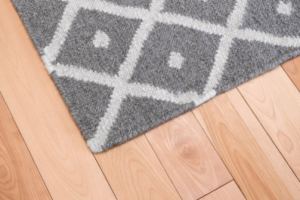 While extension cords may be unsightly, trying to hide them under rugs or carpet is a serious fire risk. “Running them under carpet will just add to heat buildup and they will catch fire eventually—it’s only a matter of time,” says Hart.
While extension cords may be unsightly, trying to hide them under rugs or carpet is a serious fire risk. “Running them under carpet will just add to heat buildup and they will catch fire eventually—it’s only a matter of time,” says Hart.
Hiding under a rug or carpet sands down the outside insulation of the extension cord. Placing an extension cord under carpet installed over a cement floor is a serious fire hazard. Walking and vacuuming gradually removes the cords outside insulation. As the outside insulation wares down, the bare copper wire becomes exposed. That’s when the fire happens.
While on the topic of extension cords, don’t use those flimsy brown and white cords sold at discount, bargain, retail, and local hardware stores. These cords will overheat quickly when using a vacuum, electronics, household appliances, and some light fixtures/lamps. Never use these in a garage or attic for any reason.
You have long curtains in the kitchen.
 Yep, the long curtains in your kitchen aren’t much better when it comes to fire safety. When they catch a breeze from an open window, they can easily “come into contact with cook tops or any other electrical appliances you may have in the kitchen,” says Roydhouse.
Yep, the long curtains in your kitchen aren’t much better when it comes to fire safety. When they catch a breeze from an open window, they can easily “come into contact with cook tops or any other electrical appliances you may have in the kitchen,” says Roydhouse.
Those flowing drapes are also putting you in harms way. According to Hart, “Synthetic materials that drapes are made of are more likely to catch fire”. And unfortunately, these fires tend to get out of control quickly because of how fast they spread. While you might smell an appliance overheating in time to turn it off, when a floor-to-ceiling curtain catches fire, it can engulf an entire room in mere seconds.
Your furnace hasn’t been serviced in a while. This is one of the biggest fire hazards in your home.
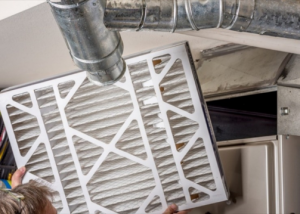 While it may seem like stoves and space heaters are the appliances most likely to set your home ablaze Hart says that “the number one appliance related to fires is furnaces.” And unfortunately, it’s not just faulty furnace wiring that can cause problems. “If they’re older or full of dust, sometimes those heaters will combust,” notes Hart, who says this can cause a fire in the home’s ductwork.
While it may seem like stoves and space heaters are the appliances most likely to set your home ablaze Hart says that “the number one appliance related to fires is furnaces.” And unfortunately, it’s not just faulty furnace wiring that can cause problems. “If they’re older or full of dust, sometimes those heaters will combust,” notes Hart, who says this can cause a fire in the home’s ductwork.
For safety and better indoor air quality, change the filter in your furnace twice each year. Change the filter more often if you live in a wooded area (such as “the woods” in Lake Forest) or your home is near an open space (very common in Mission Viejo and San Clemente). If you use your furnace frequently (regularly turn it on 3-4 times each week), your furnace filter should be changed roughly every 3 months. This is one of the bigger fire hazards in your home. Don’t forget to change the filter regularly!
A great rule of thumb is to change the filter when day light savings begins and ends at a minimum.
You use the drawer under your stove for storage.
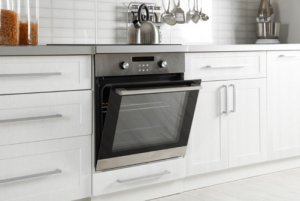 That drawer under your stove has a purpose—and cutting board storage isn’t it. In fact, using that warming drawer to stow miscellaneous items could be the very thing that ends up burning your house down.
That drawer under your stove has a purpose—and cutting board storage isn’t it. In fact, using that warming drawer to stow miscellaneous items could be the very thing that ends up burning your house down.
Accidentally turning on the broiler drawer while things are in it puts you at risk of a serious fire. And if the things you’ve been storing in your stove do ignite, Hart recommends leaving the stove closed, turning it off, unplugging it if possible, and calling 911.
What’s that drawer for? Metal cooking items such as pots, pans, cookie sheets, etc. Do not put pots and pans with plastic handles in this drawer!
You have more than one major appliance plugged into the same power strip.
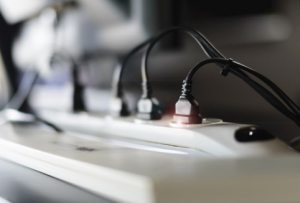 While power strips can be helpful when you have more electronics than you do outlet space, they’re only supposed to be used as “temporary devices,” cautions Hart. “Even when you don’t think it’s overloaded, it probably is.”
While power strips can be helpful when you have more electronics than you do outlet space, they’re only supposed to be used as “temporary devices,” cautions Hart. “Even when you don’t think it’s overloaded, it probably is.”
He warns that even two computers plugged into a single power strip can be enough to cause a short and a fire as a result. “If you need more power in a certain room in your house, you need an electrician, not more extension cords or power strips,” Hart advises.
Also, keep them dusted. Remember our earlier conversation on dust? Dust is one of those easy fire hazards in your home to quickly remedy.
You don’t pay attention to the wattage of your light bulbs. This is an often overlooked fire hazard in your home.
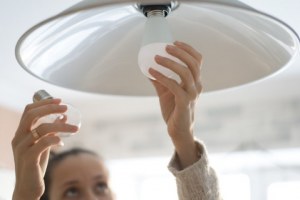 “Always use the correct manufacturer listing for a light bulb,” says Hart. “Higher wattage light bulbs are more likely to lead to overheating and, eventually, fire.”
“Always use the correct manufacturer listing for a light bulb,” says Hart. “Higher wattage light bulbs are more likely to lead to overheating and, eventually, fire.”
One of the worse things I see in houses is people using flood lights in their recess lights. This is one of the worse fire hazards in your home! Older recess light devices use a medium base (screw in) light bulb. Medium base recess lights were designed by the manufacture to use 65 watt or less PAR type bulbs. To get more light, people install 65-watt to 150-watt flood light bulbs. If you have this set up, turn the lights on and go feel just under the bulb (WARNING – don’t touch – you will burn your hand badly!). THAT’S WRONG and incredibly dangerous!
Older recess lights can easily and cheaply be converted to LED. LED uses significantly less power and last 25+ years without needing to change the bulb. These are also much cooler and safer for your home. Call me and I’ll be more than happy to discuss with you the huge benefits of LED. If you like, DAD’s will replace all your current recess lights with super energy efficient LED recess lights. It’s really not very expensive. You’ll save a lot of money on your electricity bill . . . and maybe save your house from catching on fire!
This also applies to your outside lights.
You don’t have dedicated storage for your hot hair tools. This fire hazard in your home is easy to miss.
 Sure, you may have turned off that flat iron, curling iron, rollers, and blow dryer, but that doesn’t mean you’re necessarily playing it safe. These appliances are a frequent cause of electrical shorts, Hart says. Leaving a hot tool on a plastic or wood surface—even if it’s turned off or unplugged—has the potential to start a fire. His suggestions? “Always use it in the same place and make sure it’s left somewhere safe to cool off.” Good cooling options include a wire storage rack, stone counter, or inside a heat-proof silicone sleeve.
Sure, you may have turned off that flat iron, curling iron, rollers, and blow dryer, but that doesn’t mean you’re necessarily playing it safe. These appliances are a frequent cause of electrical shorts, Hart says. Leaving a hot tool on a plastic or wood surface—even if it’s turned off or unplugged—has the potential to start a fire. His suggestions? “Always use it in the same place and make sure it’s left somewhere safe to cool off.” Good cooling options include a wire storage rack, stone counter, or inside a heat-proof silicone sleeve.
Do not put these hot appliances back under the sink! You know, the place where you store toilet paper, sanitary products, Kleenex, and chemicals such as rubbing alcohol, shampoo, nail polish, nail polish remover, cleaning products, etc. Doing this and you’re almost begging for a fire. Perhaps you’ve done this for years and never had a problem! Trust me, the day is coming when this will catch your house on fire. Stop!
You haven’t upgraded your electric service in a long time. This is the cause of many home fires.
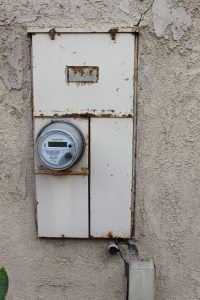
Your fuses never trip, and your lights don’t flicker, so your risk of an electrical fire is practically nil, right? Unfortunately, that’s not necessarily the case. If you haven’t upgraded your home’s electrical panel in the last 10-15 years, it’s likely you’re overloading it. An old or over loaded electrical (or service) panel is one of the greatest fire hazards in a home.
According to Hart, one common recipe for disaster is “newer appliances that draw more electricity plugged into an older electrical power [source].” Not only will the entire electrical panel burn out and catch fire, but those flames can ride up the side of your house and cause multi-story damage.
Most older homes in Orange County (those built prior to 2010) have electrical or service panels that only have a 100-150 amp main breaker. Houses today require a 200-amp panel. If yours is not a 200-amp panel, call me and we can talk about performing an upgrade.
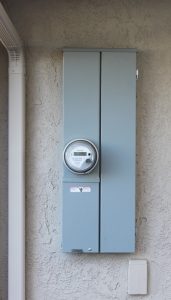
Your electrical panel has electrical circuit breakers and is the main distribution point for electrical circuits in your home. These circuit breakers have a safe and useful life of about 10 years. If an electrical circuit becomes overloaded, it trips (shuts off). This safety feature prevents the wiring from getting to hot and causing a fire. A circuit becomes overloaded when more amperage (amps) is flowing through the circuit than it was designed for. For example, a 15-amp circuit is designed to safely support 15 amps.
If you have appliances, TV’s, recording devices, computers and computer devices, lights, chargers, etc. on a 15-amp circuit and they are using, say, 18 amps, the breaker should trip (shut off). If the breaker does not trip, that means it’s time for replacement, so it does not cause a fire. Why? Because the entire circuit is getting too hot! I’ve seen lots of fried (seriously burned and melted) breakers and wiring. Some looked to me like a fire was only days or hours away – really scary stuff!
What about the circuit breakers?
If the breaker does not trip, how do you know if it’s over loaded? You don’t unless you have a properly working GFCI or AFCI receptacle on the circuit. The California Residential Building Code requires a GFCI and/or AFCI receptacle in bathrooms, kitchens, laundry areas, garages, and outside. That’s why circuit breakers should be replaced every 10 years, so you know they are working properly. And if you don’t have a 200-amp panel, you need to change it to a 200-amp panel. If you don’t know if your panel is a 200-amp panel, call me and I can help you with this. Basically, the main breaker will say 100, 125, 150, or 200 on it.
Fire Extinguisher in your Home.
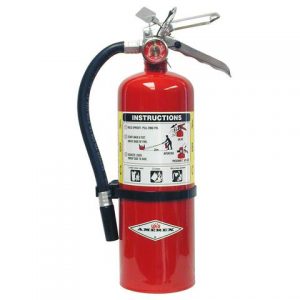 Keep at least 2 fire extinguishers readily available. One in the garage and one in the kitchen (usually under the kitchen sink . . . in front). Install the garage fire extinguisher on the wall next to the door used to enter the house. Mount with the bottom about 52” from the finished floor. This keeps it out of children’s reach and is easy to grab in an emergency. Cut out the “How to Use” instructions and affix to the wall next to the fire extinguisher. Under the kitchen sink, affix the instructions to the inside of the cabinet door. Make sure all adults living in your house thoroughly understand how to use the fire extinguisher. Monthly, check the gauge to make sure it’s fully charged.
Keep at least 2 fire extinguishers readily available. One in the garage and one in the kitchen (usually under the kitchen sink . . . in front). Install the garage fire extinguisher on the wall next to the door used to enter the house. Mount with the bottom about 52” from the finished floor. This keeps it out of children’s reach and is easy to grab in an emergency. Cut out the “How to Use” instructions and affix to the wall next to the fire extinguisher. Under the kitchen sink, affix the instructions to the inside of the cabinet door. Make sure all adults living in your house thoroughly understand how to use the fire extinguisher. Monthly, check the gauge to make sure it’s fully charged.
Purchase a dry chemical fire extinguisher certified for class A, B, and C fires. The best and most frequently recommended by firefighters is the Amerex B402. List price is about $60.00 on Amazon. See Amerex B402 Fire Extinguisher. A second best is the Kidde Pro 210 2-A-10-B:C Fire Extinguisher (2-Pack) from Home Depot. List price is about $69.00. See Kidde Pro 210 Fore Extinguisher.
Keep your smoke and carbon monoxide alarms up to date.
I hope this article on “Fire Hazards in Your Home” was helpful. Following the suggestions in this article will help keep you, your family, and your home safe from fire.
Always Hire a Reliable and Dependable Contractor to Remodel your Home
 Always work with a trustworthy contractor like DAD’s Construction. We are experts in bathroom, kitchen, and full home interior remodeling. We manage projects in an efficient manner. DAD’s Construction will do everything to minimize the possibility of change orders. Our team will make sure we have all the necessary information to prepare a proposal that meets your requirements. Rest assured that we will provide you with a detailed, by line-item contract. We will make sure that the contents of this agreement are properly and clearly communicated to you. If you have questions or need updates regarding your project, we will always answer your inquiries.
Always work with a trustworthy contractor like DAD’s Construction. We are experts in bathroom, kitchen, and full home interior remodeling. We manage projects in an efficient manner. DAD’s Construction will do everything to minimize the possibility of change orders. Our team will make sure we have all the necessary information to prepare a proposal that meets your requirements. Rest assured that we will provide you with a detailed, by line-item contract. We will make sure that the contents of this agreement are properly and clearly communicated to you. If you have questions or need updates regarding your project, we will always answer your inquiries.
How Can I Receive More Information on Remodeling my Home?
If you would like more information on enjoying the best bathroom, kitchen, and interior remodeling experience in Orange County, call Dan at (949) 380-0177 or at dan@dadsconstruction.com for a free in home consultation. DAD’s serves all of South Orange County California. This includes Lake Forest, Mission Viejo, Foothill Ranch, Portola Hills, Ladera Ranch, Irvine, San Clemente, Dana Point, San Juan Capistrano, Rancho Santa Margarita, Coto de Caza, Dove Canyon, Laguna Niguel, Laguna Hills, Laguna Beach, Newport Beach, and Aliso Viejo.
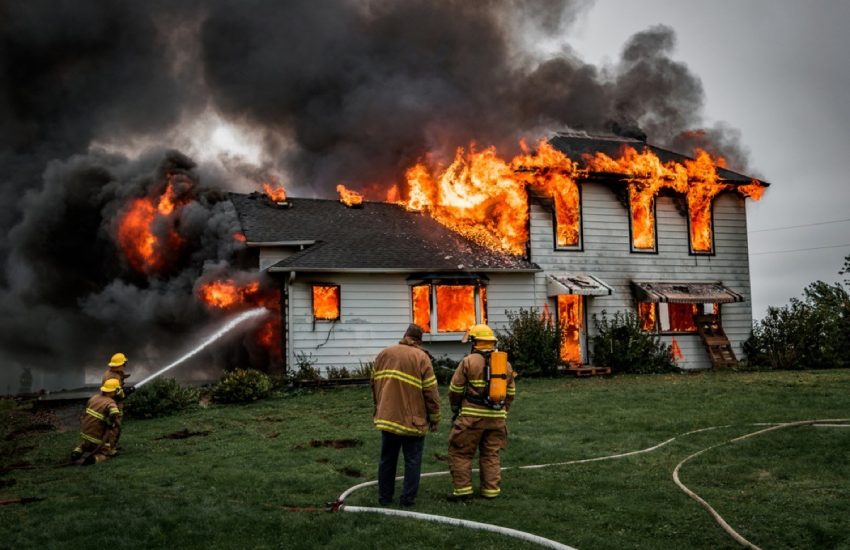
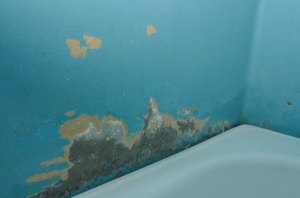 Around the pipe venting a furnace, boiler, or wood stove
Around the pipe venting a furnace, boiler, or wood stove